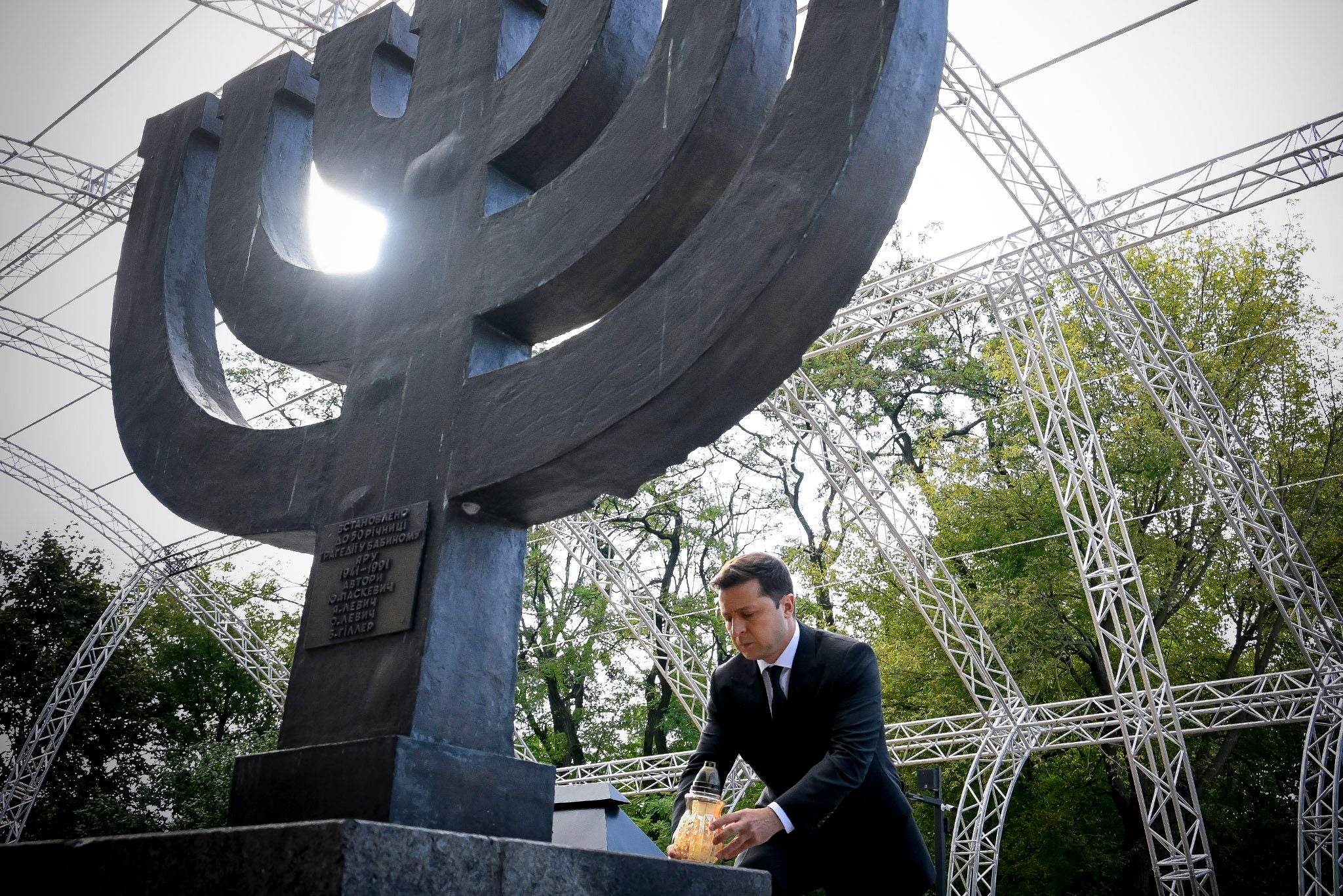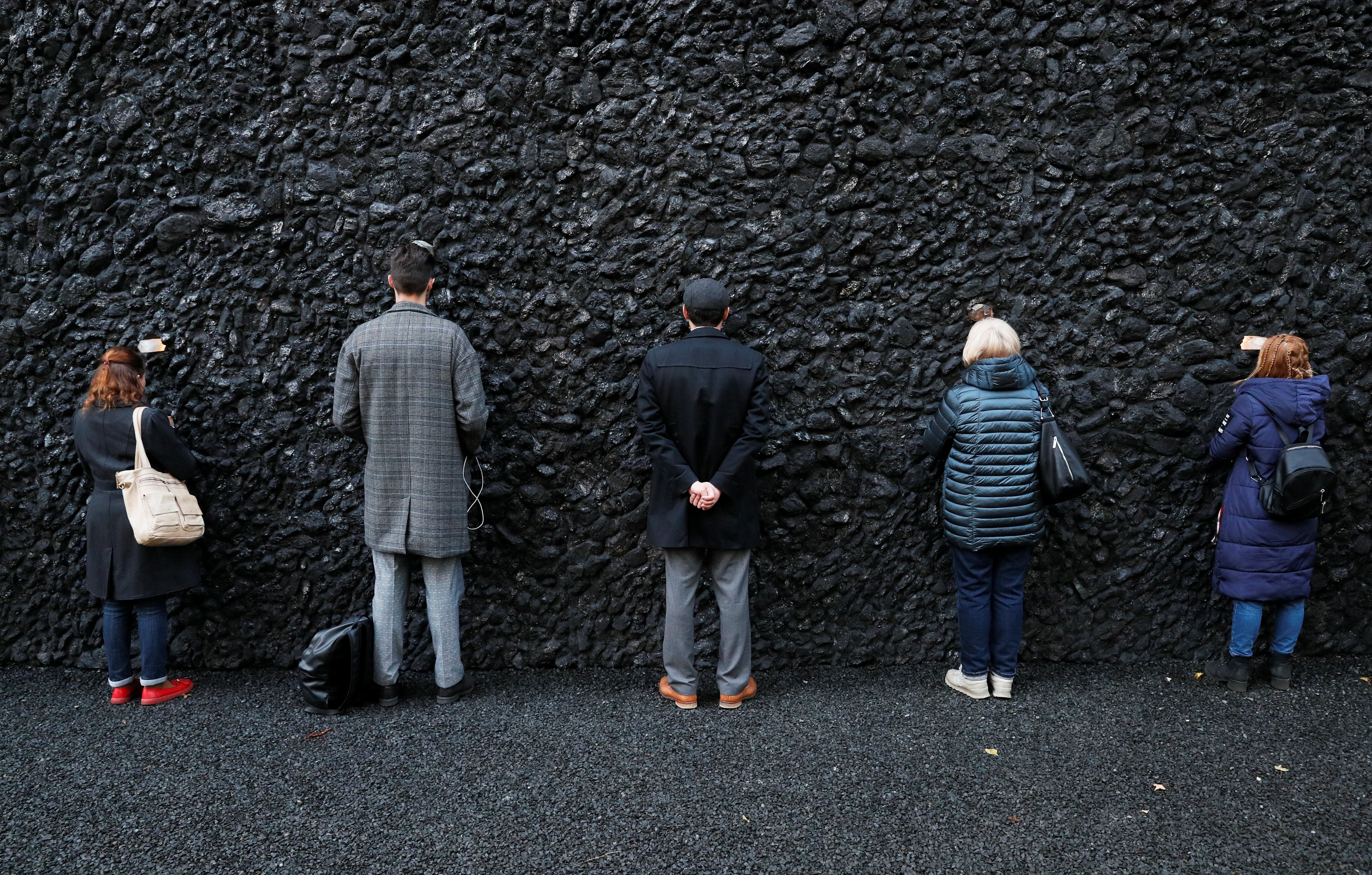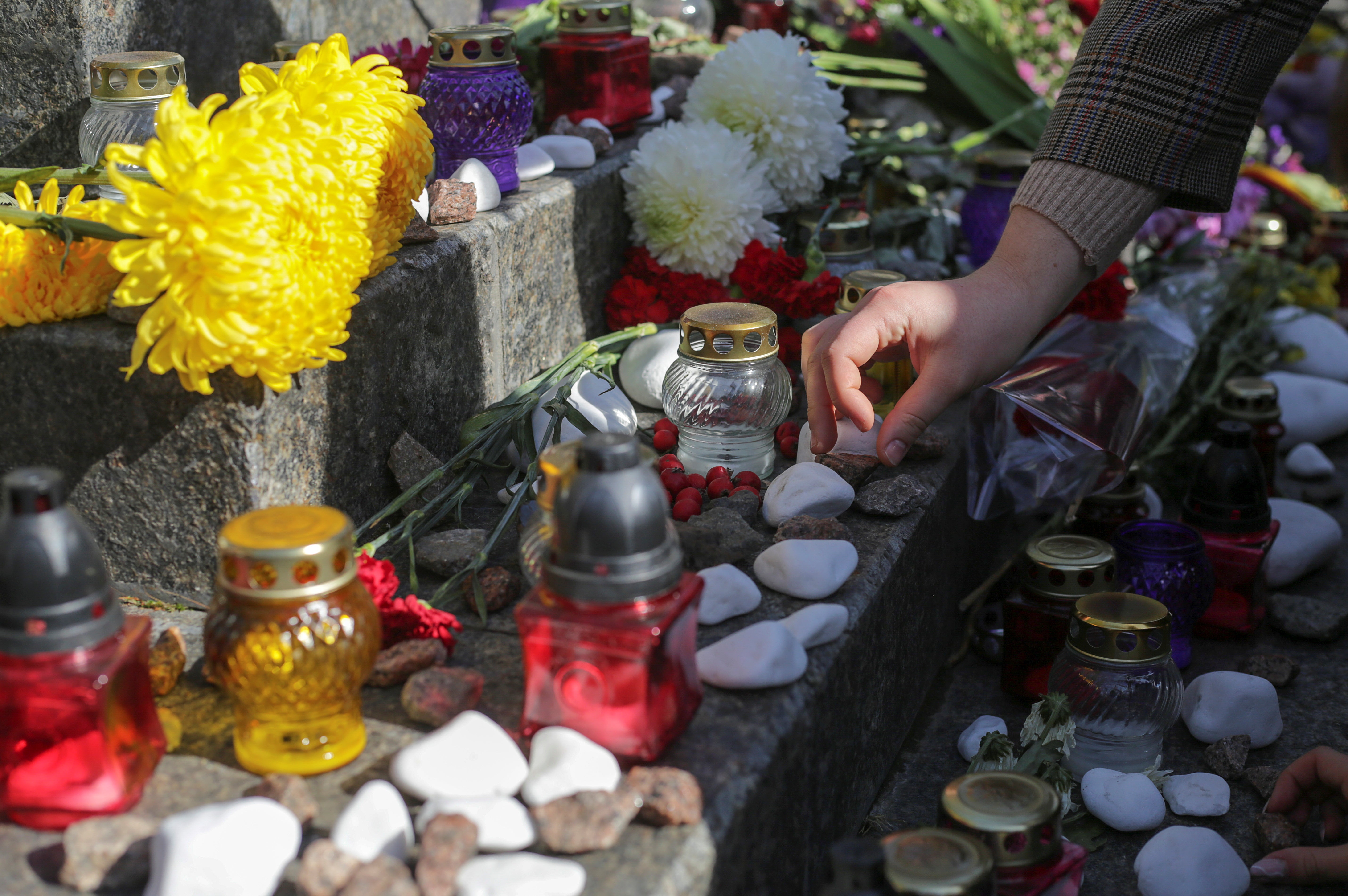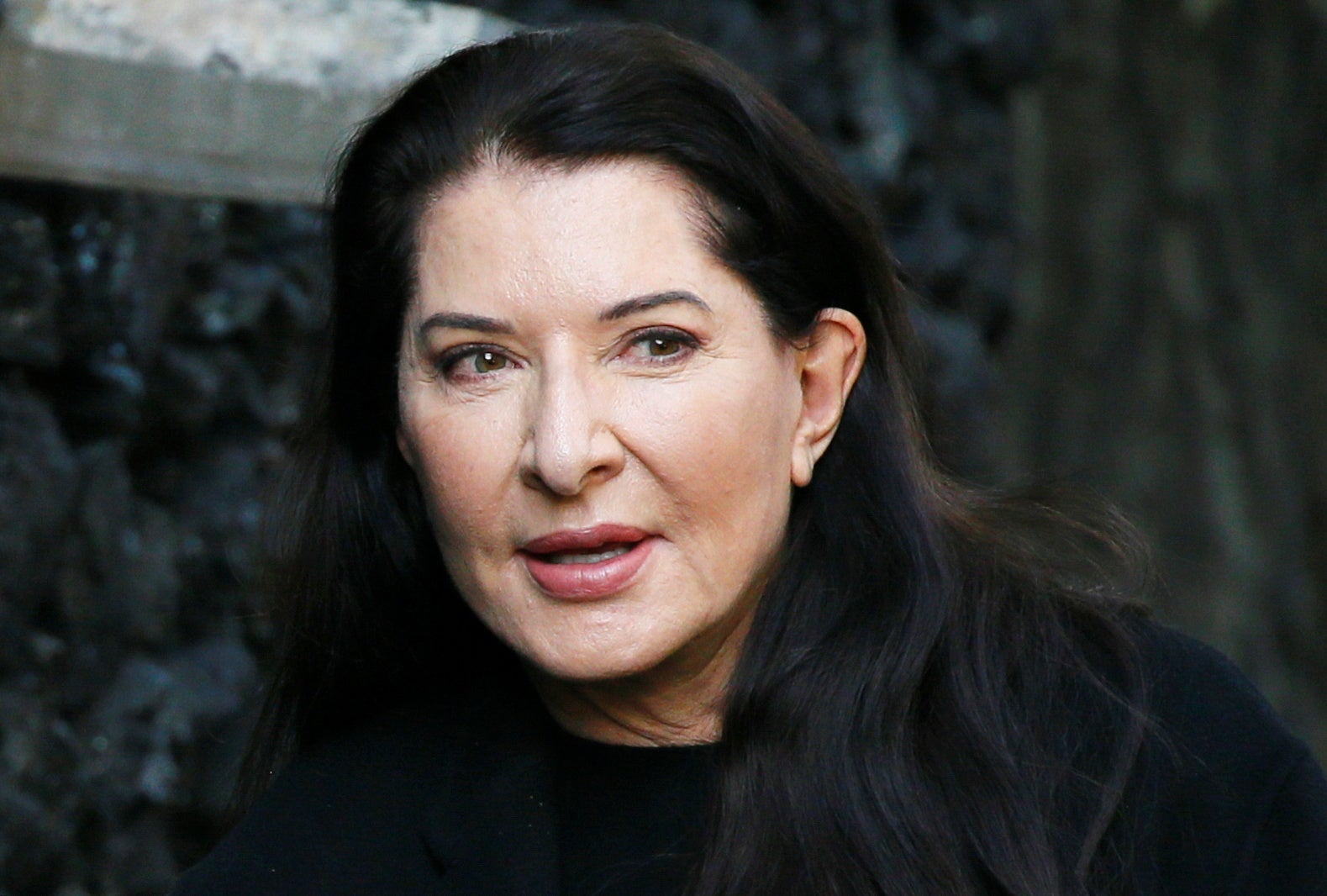‘Holocaust Disneyland’ funded by Russia stirs fears and suspicions in Ukraine
A monumental project to memorialise one of the Holocaust’s most shameful episodes has been complicated by scandal and geopolitics, reports Oliver Carroll in Kiev


Over two days in September 1941, Nazi soldiers executed 33,771 Jews at the edge of Babyn Yar, a long, steep ravine on the northwestern edge of Kiev. The mass murder was one of the most nefarious episodes of the entire Holocaust, but if you were to visit the site, you’d be forgiven for not knowing.
A succession of cover-ups – first from the retreating Germans, and then from Soviet authorities, who preferred to build a sludge reservoir rather than a memorial – have been somewhat successful in performing a second elimination: of history itself.
Today, a drab, concrete metro station stands at the centre of what was the killing field. In the public park that surrounds the metro station, the banalities of contemporary Ukrainian life overshadow those of Nazi evil. Homeless drunks hassle for a spare note. Couples jockey prams over crooked pavements. Runners run round, trying to avoid the congealed fluids and discarded cigarette butts that cover the paths.
Over the years, dozens of initiatives have tried to return history to Babyn Yar. The latest, and by far most ambitious, of them is the $100m plan for a new museum complex, funded by a group of tycoons led by Ukrainian-born Russian oil and banking oligarch Mikhail Fridman.
On 6 October, the project unveiled the first of many promised memorial installations: a book-shaped synagogue, the Crystal Wall of Crying by the Serbian performance artist Marina Abramovic; and a “mirror field” of reflective metal columns punctured by replica bullets.
The absence of a fitting memorial has for 80 years festered as an open wound on the local Jewish community. But its leaders remain doubtful that the Russian-led project is the proper cure.
Fears were exacerbated with the appointment of Russian film director Ilya Khrzhanovsky, whose previous project, Dau, was a controversial cinematic experiment that courted scandal with its casting of a famous neo-Nazi and unsentimental approach to violence, abuse, rape, and coercion.
Several local experts have walked out of the project, with one accusing Khrzhanovsky of trying to create a “Holocaust Disneyland” against the wishes of survivors.
Svetlana Petrovskaya, 86, was five years old when she was evacuated from Kiev in July 1941. Two months later, and within 10 days of the Nazis taking the city, half of Kiev’s estimated 70,000 Jewish population was dead. The speed of the Nazis’ operation may in part be explained as revenge for the Soviet secret police’s “scorched earth” operation of 24 October, which blew up much of central Kiev using radio-controlled explosives.
Petrovskaya, a retired history teacher, says what she knows about Babyn Yar from the words of her aunt Nastya, a lucky survivor. Nastya accompanied her grandmother Anna and aunt Lelya, a famous pianist, part of the way on their fateful 29 September death march to Babyn Yar. Nastya, who was not Jewish, was pulled from the crowds by a Ukrainian policeman at the second of three security perimeters, just before the ravine. The officer heard her speaking Ukrainian – “No place for you here,” he said. Other Ukrainian policemen reportedly stopped Jews from leaving the line.
“The thing you need to understand is that people weren’t aware of the real reason they were being marched to Babyn Yar,” Petrovskaya says. “Everyone assumed they were about to be repatriated – to Palestine or wherever. They simply didn’t have the information about the previous persecutions that we have now.”

In the two years of Nazi occupation, an estimated 90-100,000 Ukrainians were shot at Babyn Yar. Most of them were Jewish, but the Germans targeted other groups too: 752 patients of the local psychiatric hospital, gypsies, Soviet prisoners of war, and even Ukrainian nationalists. Many of this latter group had initially welcomed the Nazi advance, seeing it as a way to end Stalinist rule that had inflicted the Holodomor famine of 1932-33 on Ukraine. Some were even complicit in Nazi crimes against the Jews.
With the Red Army poised to retake Kiev in August 1943, German soldiers embarked on a desperate operation to conceal what happened at Babyn Yar. They enlisted 327 prisoners from the adjacent Syrets prison camp to dig up the corpses and burn them. But the men, some of whom themselves were Jews, mutinied. Eighteen escaped into hiding to later tell the tale of Babyn Yar to the world; the rest were shot.
After the war, Stalin’s paranoia of Jews grew, and Soviet authorities ended up almost as keen as the the Germans to cover up the genocide. Memorials made reference only to “Soviet” or “Kiev” citizens rather than Jewish victims. There were plans to build a stadium in place of the mass grave. Eventually, Ukrainian party bosses decided to fill the ravine with reservoir waste water from the local brick factory. But the curse of Babyn Yar struck again. In 1961, the sludge broke the dam, covering homes and killing at least 100 downstream, perhaps many more. The exact numbers were hushed up.
Over the 1960s and 1970s, Petrovskaya made regular pilgrimages to Babyn Yar. Authorities made it clear she wasn’t welcome. Sometimes, KGB officers would be hiding in the bushes. “They’d grab people and arrest them without giving them any reason,” she says. “They seemed petrified that someone would leave a Star of David at the site.”

Petrovskaya says she is in favour of any project that returns dignity to Babyn Yar – but adds locals “better understand the struggle that makes it what it is”. She is particularly scathing of Marina Abramovic’s “crying wall”, an interactive installation constructed from Ukrainian coal and Brazilian quartz crystals, and Khrzhanovsky’s early plans, since reversed, to introduce psychological role-playing games to the memorial.
“It’s totally fake, total nonsense,” she says. “The only thing you should do at Babyn Yar is reflect. Nothing more.”
Joseph Zissels, a local Jewish leader and dissident twice imprisoned by the Soviet regime, is the most prominent face of opposition to the new memorial complex.
He says his main concern is national security; the Russians in the project are “behaving like occupiers” at a time of undeclared war, he claims. He does not believe an oligarch such as Mikhail Fridman could invest $100m in Ukraine without approval from the Kremlin. That made the initiative “intrinsically” part of Moscow’s hybrid war against the Ukrainian nation, he adds, with the aim to put Ukraine “at the centre of the Holocaust”.
The Jewish leader later shares a letter authored by the head of the SBU, Ukrainian security services, which suggests the same.
“I met Khrzhanovsky for a chat and asked him where he thought Putin was in the project,” Zissels says. “He didn’t seem to understand the question. He didn’t understand Fridman can’t exist independently, and that you can’t have a project investing $100m in Ukraine without getting permission from the Kremlin. He’d forgotten there is a war going on that’s killing people every day.”
On his part, Khrzhanovsky acknowledges he did not seek reassurances from Fridman about his motives for bankrolling the project. But the director says he knew enough about the tycoon from “many years of friendship” not to ask. Fridman’s participation was a guarantee there would be “no crap”. Different people can survive in different systems, he says: “I know a sizeable number of the so-called Russian oligarchs and to say Mikhail Fridman is untypical among them is to put the case mildly.”
The director says criticism of his right to take charge of the project is “racism”. Ukrainians should talk about their own past, he says, but they did not have “exclusive rights’’ to Jewish history. Besides, he has skin in the game. His mother was herself a survivor of the Ukrainian Holocaust, escaping two days before they entered the village of her youth, near Vinnitsya, southern Ukraine.

That made the Babyn Yar initiative a personal one. And, he claims, it’s reflected in his salary – “comfortable” but “nowhere near” his usual rate.
The director says he was genuinely moved by a sense that Babyn Yar had become “lost in time and energy”. The strongest feeling of all on visiting the site for the first time two years ago, he says, was a “terrifying sense of feeling absolutely nothing at all”. Instead of a mass grave, he saw a “park which was a park”, and “visitors who traipse around it as if nothing had happened”.
The very first thing he did on taking charge was to renovate the toilets: “People were buying beer at the metro station and then, excuse me, pissing on the graves because there was nowhere else. The real curse of the place is that people don’t understand what’s there because they’ve been cut off from their own history.”
Khrzhanovsky says his vision, which he says he has sketched into a 100-year plan, is to return “feeling” to Babyn Yar.
“I want people to tell their friends that, yes, the Jews were killed here 80 years ago, but words can’t describe what’s actually going on at this place,” he says. “I want them to say you’ve got to come here to feel it.”
The extermination of 1.5 million Jews in eastern Europe – coined “a Holocaust by bullet” – is overshadowed by the tales of industrialised gas chamber slaughter in places like Auschwitz. But a combination of factors means Babyn Yar has now become the pre-eminent symbol of that ruthlessly efficient but underreported genocide. The fear is now that it will become a defining feature of new splits developing in the region.
Fault lines are clear enough within Ukraine itself. Even though the country has in Volodymyr Zelensky a Jewish president, who has thrown his weight behind the initiative, it has a complicated history and fragmented present. The three dozen competing memorials at Babyn Yar today are a reflection of that. Some fear that a Russian project to “monopolise” Jewish loss at a mass grave that also contains others may bring latent antisemitism to the fore.
“Every group puts its own memorial there as it sees fit,” says Zissels. “It’s no accident, but a demonstration that we haven’t yet reached consensus. And understand me right: a project led by Russia won’t help us get there. Without consensus, we can’t hope for catharsis.”
I want them to say you’ve got to come here to feel it
Petrovskaya, who takes a more emollient stance, says she has been comforted by some of Khrzhanovsky’s “less monumental” efforts. She urges him to strive to achieve a “common language” with “sympathetic” Ukrainian experts.
Her daughter, a writer and journalist, was a guest of the German president at the unveiling of the new art installations earlier this month. She reported to her mother being overcome by emotion by the opening ceremony, which saw the Berlin Symphonic Orchestra play Shostakovich’s Babyn Yar-inspired 13th symphony.
As the orchestra played, a projector ran lists of names of the thousands shot; a simple image with a profound impact.
“It’s so important not to overplay things,” Petovskaya says. “Always better to leave things unfinished than build too much.”



Join our commenting forum
Join thought-provoking conversations, follow other Independent readers and see their replies
5Comments